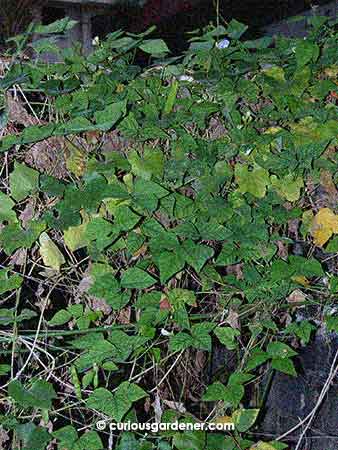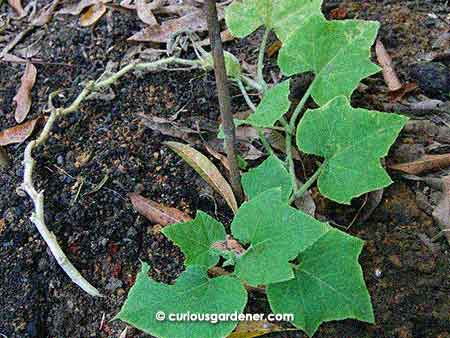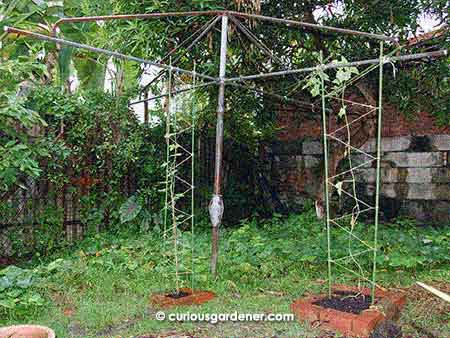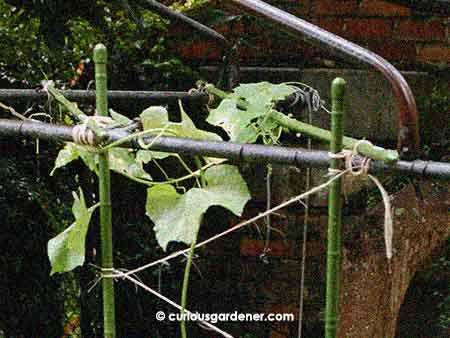It seems to be the season for second generation plants to have the limelight. Just as I mentioned the growth of our Gen2 winter melon plants, the second generation of winged bean plants also had to step up for a swing at the plate.
For this tale, we have to visit my chaotic trellises. Yes, remember the two A-frame stands that ended up housing the unruly snake gourd vine, angled loofah plant, and the latest jicama vines – all intertwined with each other?
Well, way back in March, I had a pair of winged bean sprouts grown from seeds from the first vines, and I planted them next to the angled loofah plant when the trellises were still new and clear. They weren’t vigorous plants, and when the snake gourd eventually monopolized all the growing area – eventually choking the angled loofah vine to death – I assumed that the winged bean plants had also been strangled off.
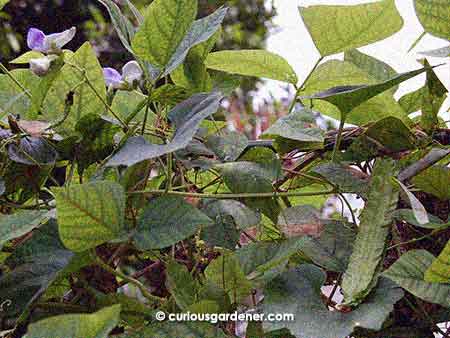
A closer look, and you can see the flowers in the top left, one winged bean in the bottom right, and if you peer closer, a second bean hidden below the cluster of flowers. It’s there, take my word for it.
I happened to be out with some friends when I got a picture message from Curious Mama. It was a photo of a young winged bean! When I got back, we went to admire the new bean, and then I noticed the clusters of winged bean flowers forming near the top of the trellis.
Yes, hindsight, I know. Or having a veil lifted from before your eyes and being able to see properly again. Duh.

In case you really wanted to know, the bangkwang or jicama leaves are on the left, and the winged bean leaves on the right. If I were really defensive, I’d also show you a picture comparing the flowers of both plants, that happen to be the same shade of light purple. They are, really! :D
Apparently I haven’t been paying proper attention to the leaves of the different plants on the trellises. Winged bean plants have similar leaves to jicama plants, and because I didn’t pay proper attention to the shapes of the leaves, I just assumed that the groupings of three leaves all belonged to the jicama plants. My mistake. A happy one, though!
© 2012 curiousgardener.com All rights reserved.

